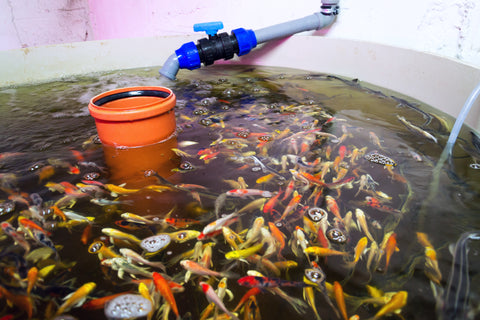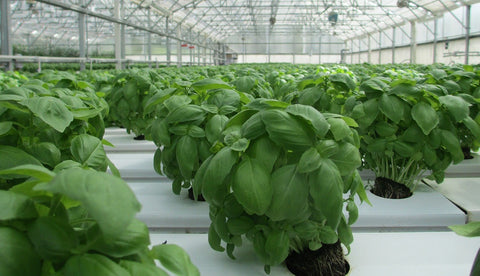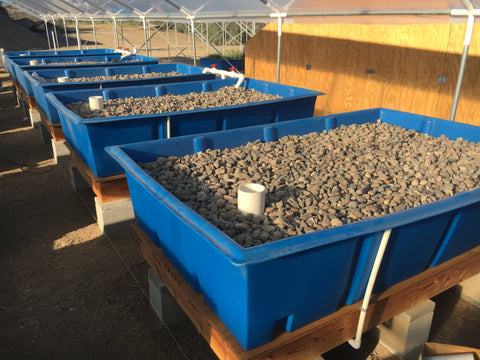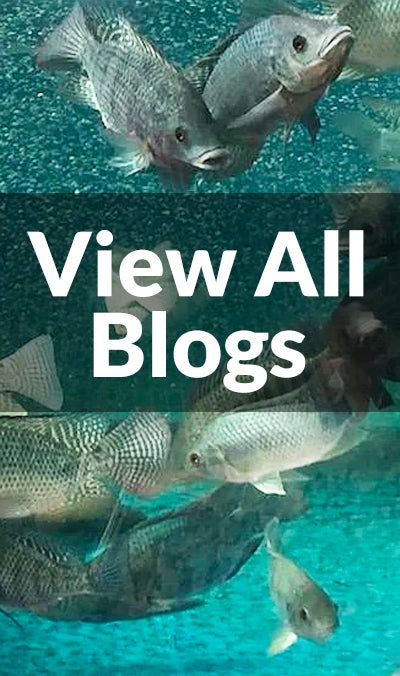To get started with aquaponics, an enthusiast must understand the essential components of aquaponics systems. These include the three main components: fish, plants, and bacteria, and the secondary components, which include the fish tank, grow bed, pumps, and plumbing. All aquaponics system designs share the common and essential components mentioned above, as each of the components plays a vital role in the success of your system.
In this article, we will discuss the basic components of aquaponics, and explore the intricacies of its aquatic and hydroponic components, as well as the symbiotic relationship that drives its success. From selecting the right fish species and constructing a functional grow bed to managing water quality and nutrient cycling, we will provide insights into every aspect of aquaponic system.
A Brief History and Development of Aquaponics
The concept of aquaponics has ancient roots, with historical evidence suggesting that the Aztecs and other ancient civilizations practiced similar techniques by growing crops on floating gardens called "chinampas." However, modern aquaponics as we know it began to emerge in the 20th century with the work of researchers and innovators seeking sustainable farming solutions.
One of the earliest documented instances of modern aquaponics dates back to the 1970s, when Dr. James Rakocy and his colleagues at the University of the Virgin Islands developed the first commercial-scale aquaponics system. Their research laid the foundation for the widespread adoption of aquaponics as a viable method for food production.
Since then, aquaponics has experienced significant growth and innovation, with enthusiasts, scientists, and entrepreneurs around the world exploring its potential. Advances in technology, along with increasing awareness of the environmental and health benefits of aquaponics, have contributed to its continued development and popularity in recent years. Today, aquaponics systems can be found in a variety of settings, from backyard hobby setups to large-scale commercial operations, offering a sustainable alternative to conventional agriculture.
The Three Main Components of Aquaponics Systems
I. Fish
Fish plays a vital role in the aquaponics system as they will be the source of natural fertilizer for the plants. The common fish species grown in aquaponics systems are tilapia, trout, catfish, largemouth bass, koi, goldfish an other ornamental fish.
Key things to consider when selecting the fish for your system:
- Species compatibility: Choose fish species that are well-suited to the aquaponic environment and compatible with the chosen plant species.
- Temperature tolerance: Consider the temperature requirements of the selected fish species and ensure that they are suitable for the climate in which the aquaponics system will be operated.
- Growth rate: Select fish species with relatively fast growth rates to maximize productivity and yield in the aquaponic system.
- Nutrient production: Different fish species produce varying amounts of waste, which serves as a nutrient source for the plants. Factor in the nutrient needs of the plants when selecting fish species to ensure a balanced ecosystem.
- Market demand: Consider the market demand and potential profitability of the chosen fish species, especially for commercial aquaponics operations.
A. Fish Tank Setup:
- Tank size and shape: Choose an appropriately sized fish tank based on the number and size of fish to be raised. Rectangular or circular tanks are commonly used in aquaponics systems.
- Filtration system: Install a filtration system to remove solid waste and maintain water quality. Options include mechanical filters, biological filters, and settling tanks.
- Aeration:Ensure adequate oxygenation of the water by using aeration devices such as air stones or diffusers. Proper oxygen levels are essential for the health and well-being of the fish.
- Temperature control: Maintain optimal water temperature for the selected fish species through the use of heaters or chillers, depending on environmental conditions.
- Lighting: Provide adequate lighting for the fish tank, especially if raising species that benefit from natural light cycles. LED lights are often used for energy efficiency and precise control.
B. Water Quality Management:
- Monitoring: Regularly monitor water parameters such as pH, ammonia, nitrite, and nitrate levels to ensure optimal water quality for both fish and plants.
- pH adjustment: Maintain stable pH levels within the optimal range for the selected fish and plant species. Use pH buffers or adjust water alkalinity as needed.
- Ammonia detoxification: Implement biological filtration methods to convert toxic ammonia produced by fish waste into less harmful compounds, such as nitrate, through the nitrogen cycle.
- Water exchange: Consider periodic water exchanges to dilute accumulated nutrients and maintain overall water quality. But be mindful of disrupting the balance of the ecosystem.
- Disease prevention: Practice good hygiene and quarantine protocols to prevent the spread of diseases among fish. Regularly inspect fish for signs of illness and treat as necessary to maintain a healthy population.

II. Plant
You can grow many plants in an aquaponics system, and picking plants to grow in your aquaponics system can be a fun part. However, different plants have different needs and thrive under other conditions. Making the right choice in aquaponics plants is essential to the success of the system and the success of your harvest.
Key things to consider when selecting the plants for your system:
- Species compatibility: Choose plant species that are well-suited to the hydroponic environment and can thrive in the nutrient-rich water provided by the aquaponics system.
- Growth requirements: Consider the light,temperature, and humidity requirements of the selected plant species to ensure optimal growth and yield.
- Crop diversity: Select a variety of plant species with different growth habits and nutrient needs to maximize the diversity and productivity of the aquaponic system.
- Edible vs. ornamental: Decide whether the primary goal of the aquaponic system is to produce edible crops, ornamental plants, or a combination of both, and choose plant species accordingly.
- Market demand: Consider the market demand and potential profitability of the chosen plant species, especially for commercial aquaponics operations.
A. Grow Bed Construction:
- Bed material: Choose a suitable material for constructing the grow beds, such as food-grade plastic, wood, or metal. Ensure that the material is durable, non-toxic, and resistant to water damage.
- Bed design: Design the grow beds with sufficient depth and surface area to accommodate the root systems of the selected plant species. Consider factors such as drainage, slope, and accessibility for maintenance.
- Media selection: Select a grow media that provides adequate support for plant roots and promotes good water retention and aeration. Common options include gravel, expanded clay pellets, and lava rock.
- Irrigation system: Install a reliable irrigation system to deliver water and nutrients to the plants in the grow beds. Options include flood and drain systems, drip irrigation, or nutrient film technique (NFT) systems.
- Plant spacing: Determine the spacing requirements for the selected plant species based on their mature size and growth habits. Proper spacing ensures efficient use of space and prevents overcrowding.
B. Nutrient Cycling:
- Fish waste utilization: Utilize fish waste as a nutrient source for the hydroponic plants by circulating the water from the fish tank through the grow beds. The plants absorb nutrients from the water, thereby purifying it for recirculation to the fish tank.
- Microbial activity: Promote the growth of beneficial bacteria in the grow beds, which play a crucial role in converting ammonia produced by fish waste into nitrites and nitrates through the nitrogen cycle. These nitrogen compounds serve as essential nutrients for plant growth.
- Supplemental nutrients: Monitor nutrient levels in the aquaponic system and supplement as needed to ensure that plants receive all essential nutrients for healthy growth. Common supplements include iron, calcium, magnesium, and trace minerals.
- pH balance: Maintain stable pH levels within the optimal range for plant nutrient uptake, typically between 5.5 and 7.0. Adjust pH as needed using pH buffers or acids/bases to prevent nutrient deficiencies or toxicities.
- Monitoring and adjustment: Regularly monitor nutrient levels, pH, and overall plant health in the aquaponic system, and make adjustments as necessary to optimize nutrient cycling and plant growth.

III. Bacteria
An aquaponics system requires beneficial bacteria for the fish and plants to thrive. Bacteria play an essential part in the aquaponic cycle. It transforms fish waste into nutrients for the plants in the process known as nitrification.
A. Understanding the Nitrogen Cycle:
- Ammonia production: The nitrogen cycle begins with the production of ammonia by fish as a waste product through respiration and excretion.
- Nitrosomonas bacteria: Ammonia is converted into nitrites by nitrifying bacteria such as Nitrosomonas spp. This process is known as nitrification and occurs in aerobic conditions.
- Nitrobacter bacteria: Nitrites are further converted into nitrates by another group of nitrifying bacteria, such as Nitrobacter spp. This step completes the nitrification process.
- Nitrate uptake by plants: Plants uptake nitrates from the water through their roots and utilize them as a source of nitrogen for growth and development.
- Denitrification: In some aquaponics systems, denitrifying bacteria may also convert nitrates back into nitrogen gas (N2) under anaerobic conditions, completing the nitrogen cycle and reducing the buildup of nitrates.
B. Beneficial Bacteria:
- Role in nitrification: Beneficial bacteria play a crucial role in the nitrogen cycle by converting toxic ammonia and nitrites produced by fish waste into less harmful nitrates, which are readily taken up by plants.
- Importance of surface area: Providing ample surface area in the grow beds enhances bacterial colonization and promotes efficient nitrification. Porous media such as gravel, expanded clay pellets, or biofilter media offer a large surface area for bacterial growth.
- Cycling process: Beneficial bacteria establish themselves in the aquaponic system during the initial cycling phase, which typically lasts several weeks. During this time, ammonia levels rise as fish waste accumulates, providing substrate for bacterial growth. As nitrifying bacteria populations increase, they convert ammonia into nitrites and subsequently into nitrates.
- Maintenance: Regular monitoring of water parameters, including ammonia, nitrite, and nitrate levels, is essential to ensure that beneficial bacteria populations are thriving and performing their vital role in the aquaponic system. Adequate aeration and oxygenation of water also support the growth and activity of beneficial bacteria.

Environmental Considerations for Aquaponics
A. Temperature Control:
- Optimal temperature range: Maintain water temperatures within the optimal range for the selected fish and plant species. Different species have specific temperature requirements for growth and metabolism.
- Heating and cooling: Use heaters to raise water temperatures during colder periods and chillers to lower temperatures during hotter periods. Insulating tanks and grow beds can help stabilize water temperatures and reduce energy consumption.
- Monitoring: Regularly monitor water temperatures using a thermometer or temperature probe to ensure they remain within the desired range. Sudden fluctuations in temperature can stress fish and impact plant growth.
- Environmental factors: Consider external factors such as ambient temperature, sunlight exposure, and seasonal variations when planning temperature control strategies. Shade structures or greenhouse enclosures can help regulate temperatures and protect aquaponic systems from extreme weather conditions.
- Species-specific requirements: Research the temperature preferences of the fish and plant species being cultivated and adjust temperature control measures accordingly to create an optimal environment for both components of the aquaponic system.
B. Oxygenation:
- Importance of oxygen: Adequate oxygen levels are essential for the health and well-being of fish, plants, and beneficial bacteria in the aquaponic system. Oxygen supports respiration, metabolism, and nutrient uptake processes.
- Aeration devices: Install aeration devices such as air pumps, air stones, or diffusers to oxygenate the water and promote gas exchange. These devices create bubbles that increase surface agitation and enhance oxygen transfer from the air to the water.
- Placement of aeration devices: Position aeration devices strategically throughout the fish tank and grow beds to ensure uniform oxygen distribution. Areas with poor water circulation, such as corners or dead spots, may require additional aeration.
- Monitoring oxygen levels: Regularly monitor dissolved oxygen levels using a dissolved oxygen meter or test kit to ensure they remain within the optimal range for aquatic life. Oxygen levels can fluctuate due to factors such as temperature, stocking density, and biological activity.
- Emergency backup: Consider installing backup aeration systems, such as battery-powered air pumps or emergency generators, to prevent oxygen depletion during power outages or equipment failures. Proper maintenance of aeration equipment is also essential to prevent malfunctions and ensure continuous oxygenation of the aquaponic system.
Maintenance and Troubleshooting Your Aquaponics System
A. Regular Checks and Balances:
- Water parameters: Regularly monitor key water parameters such as pH, ammonia, nitrite, nitrate, dissolved oxygen, and temperature to ensure they remain within the optimal range for fish and plant health.
- System components: Inspect equipment such as pumps, filters, aeration devices, and irrigation systems for signs of wear, damage, or malfunction. Clean or replace components as needed to maintain proper functionality.
- Plant health: Check plants for signs of nutrient deficiencies,pest infestations, or diseases. Prune dead or diseased foliage and remove any debris that may accumulate in the grow beds.
- Fish behavior: Observe fish behavior regularly to detect signs of stress, illness, or aggression. Look for abnormal swimming patterns, loss of appetite, or changes in coloration.
- Routine tasks: Perform routine maintenance tasks such as water changes, filter cleaning, and substrate replenishment according to a predetermined schedule. Keeping a maintenance log can help track tasks and ensure they are completed on time.
B. Common Issues and Solutions:
- pH fluctuations: Fluctuations in pH levels can affect nutrient availability and impact fish health. Adjust pH as needed using pH buffers to maintain stability within the optimal range.
- Ammonia spikes: High levels of ammonia can be toxic to fish and indicate problems with filtration or nutrient cycling. Increase aeration, perform water changes, and monitor feeding rates to prevent ammonia buildup.
- Nutrient deficiencies: Yellowing leaves, stunted growth, and poor fruit development are signs of nutrient deficiencies in plants. Supplement nutrients as needed and ensure proper nutrient cycling in the aquaponic system.
- Pest infestations: Common pests such as aphids, whiteflies, and mites can affect plant health in aquaponic systems. Implement integrated pest management strategies such as introducing beneficial insects or using organic pest control methods to manage infestations.
- Equipment failures: Malfunctions or breakdowns in pumps, heaters, or aeration devices can disrupt the balance of the aquaponic system. Have backup equipment on hand and perform regular maintenance to prevent unexpected failures. During equipment failure, troubleshoot the issue promptly and implement temporary solutions to minimize impacts on fish and plants.
Conclusion
The beauty of aquaponics lies in its simplicity and efficiency. By harnessing the natural synergy between fish and plants, you can create a sustainable food production system that benefits your home, your plate, and the environment.
Hopefully this article has equipped you with the foundational knowledge to embark on your own aquaponics journey. Remember, aquaponics is a dynamic process, and there's always more to learn. Embrace the exploration, experiment with different plants and fish combinations, and most importantly, have fun cultivating your very own aquaponics system!
Ready to dive deeper? Here are some resources to get you started:
With a little planning and dedication, you can create a thriving ecosystem that produces fresh, healthy food while minimizing your environmental footprint. So, what are you waiting for? Start your aquaponics adventure today!






ejaz
May 09, 2022
I want to set up a seat up Aquaponics business using your methods.
-How much will it cost
-how much space do I need
-can it be a profitable business ??